Natural Health Solutions
- The Well (Home Page)
- Water Cures Blog
- How To Do Water Cures
- What is Water Cures?
- Electrolytes & Salt
- Drinking Water
- Hire a Hydration Coach
- Acid Reflux
- Addiction Treatment
- Allergy Relief
- Blood
- Bones and Joints
- BP / Heart / Vascular
- Brain / Head / Mental
- Cancer
- Chronic Fatigue
- Cramps No More
- Dehydration
- Edema
- Fibromyalgia
- HIV / AIDS
- Immune System
- Lungs / Respiratory / Cough
- Lupus
- Lyme Disease
- Multiple Sclerosis
- Pain
- Skin Care
- Urinary Tract Infection
- Womens Health
- Water & Weight Loss
- Student Grades
- Survivalist Health Care
- Pet Water Cures
- Hydration Coach
- Testimonials
- My Water Cures
- FAQ
- In The News
- Volunteer
- About / Contact
- Red Light Therapy
- Live Blood Microscopy
Healthy Hydration:
In Sports, Running and Life
In Sports, Running and Life
Reasons for Previous Hydration Guidelines Failed
What is healthy hydration?
Consider the science and discover an option to better hydrate in sports, running or your leisure life. Lets start with marathon hydration. We propose a custom, unique to each person method of hydration that follows the water cures protocol.
Our Limited Trials: The following is based on our 1 on 1 coaching and are limited trials of our theory. Consult or work with a doctor before trying. Do not use of you are under medical supervision. Those we have coached, using this as a foundation, have experienced considerable improvements in several ways.
 |
Healthy Hydration for Marathon Runners
The research on hydration is demonstrating that current thinking is wrong. The Water Cures theory is based on how the hydration works in the human body combined with current research findings.
Science puts theories out as a recommendation. Like sheep, we follow and try the recommendation. They may either work, provide limited success or in time are disproved and disappear. Sometimes in the future, another study improves on or causes us to totally abandon the original theory.
This is what has happened with healthy hydration for sports and especially for marathon runners.
Unfortunately, sometimes the theories and recommendations are bought and paid for by an interested party. The party often has a financial interest in the recommendations. Consider the thought that milk builds strong bones. It seemed true. Milk has calcium. Calcium is needed for strong bones. Thus, milk builds strong. But now we know it is not true. And if you drink low fat milk, you risk even more weakening damage to your bones.
Another example was Gator Aide....years ago, research was quoted saying it was absorbed faster than water. The only problem, it was tested by instilling it, bypassing the stomach.
What about the current wisdom about healthy hydration today in 2016.
Conventional Wisdom,
............... Unfortunate Results
Lets go back in time to consider current results. Clinical Journal of Sports Medicine 2003
In a study researching fluid replacement during marathon running, it reported that 7% of metabolic energy was produced in the form of heat and the remaining 25% of energy is available for body movement.
The faster the runner performs, the more heat is produced. Sweating is the primary way the body cools. The natural assumption was that drinking during performance (drinking while running) insures the the ability for the body to cool properly.
The theory held that runners would be at risk of heat illness if they preform too quickly in hot or humid conditions. The result would be collapse at the end of the race.
The question was, how much and when?
The paradigm shifted, suggesting athletes drink 200 to 800 ml (6 3/4 ounces to 27 ounces) to of water per hour. Those who were not top athletes were encouraged to drink as much as possible based on thirst.
Unfortunately, the theory of drinking as much as possible could cause over-drinkers to experience hyponatremia (not enough salt in the body because it was used up or washed out).
The paper said that collapse is rare among the elite athletes.
The thinking eventually adopted the "drink 400-800 ml per hour" or just under 7 ounces to 27 ounces amount for all runners.
What would be the outcomes from such a practice? Inquiring minds wanted to know. They did a study to find out. The study, called....
Sodium Status of Collapsed Marathon RunnersArch Pathol Lab Med 2005 Feb said the guidelines suggested runners drink between 400 to 800 milliliters per hour rather than the previous as much as possible advice.
The 2003 Boston Marathon was used to look at collapsed runners.
Of the 140 collapsed runners...
Too much salt
35 or 25% were hypernatremic (they had too much sodium, >146 mEq/l).
Too Much Water 6 or 12% were hyperosmolar (not enough water....omolaity >296 mOsm/kg H2o)
Not Enough Salt 9 were hyponatremic (not enough salt, sodium < 134 mEq/l
Not Enough Water 8 were hypo-osmolar> (not enough water, osmolity < 280 mOm/kg h2O
When compared with the runners who had no problem, this provides interesting results.
Of those with no difficulties....
More Salt than Needed 9% had hypernatraemia or too much salt.
Not Enough Salt 5% were hyponatraemic or not enough salt
Not Enough Water 8% were hypo-osmolar
Too Much Water none were hyperosmolar
What went wrong with the recommendations? What was the flaw?
1) They did not account for body size.
We are not all the same and there is not a one size fits all hydration. A 4 ft 5 inch person dies not need the same amount of water or salt a 6 ft 1 inch person needs.2) They did not account for diet and salt intake
A person on a raw food diet will need more salt than a person who eats processed foods as a regular part of their diet. Even if you are on a raw food diet, are foods naturally high in salt being consumed? There are too many factors to have a one size fits all theory of salt and water intake.3) They did not account for physiological differences
Some process salt differently due to their genes, with some needing more salt and some needing less. Additionally, how much salt did they have the day of and the day before the race.Another study in 2014 looked at athletes that were low on sodium. They found that in Oral vs IV Reversal of Low Sodium in the blood there was no difference. Actually there was a major difference. Oral is safer.
What is Over Hydration? What exactly is over hydration?
What if There Was A Better Way?
Factors Affecting HydrationA better way will be customized to each runner. Everyone is different. Some tolerate less water better than others. Drinking too much water, even if an appropriate amount, could slow you down. Thus, the winners are not big consumers of water. So, if you are an elite runner, this is not for you. If you want to be, this might get you there.
Both the American College of Sports Medicine (ACSM) and the International Marathon Medical Directors Association (IMMDA) have dropped the fixed amount and have opted for customized hydration programs. This means you will have to be your own scientist researching your body to see what works best.
It is easy enough to try it in practice.
Since our body can process salt when there is enough water, maintaining both salt and water intake at optimal levels would seem to make more sense.
If you are an elite runner or not, this could be an option.
If you are an older runner, the thirst perception may be off. Likewise your bodes ability to handle the shifting of water may not be as effective as when you were younger. There is still the need for common sense.
Two Class Of Runners & Unique Hydration Styles
Since marathon runners can be running for anywhere from just over 2 hours and up to 4 hours, the initial hydration should be at or near the maximum that a runners body can hold without slowing you down. Think of your body as being the storage container for the water. Drink the entire first hours worth of water 30 to 45 minutes before the run.
Note: It is reported that elite runners typically do not follow the liter per hour rule. They may take a sip every few kilos but not more. Our body has an incredible ability to shift stored water to where it is most needed. When our body is used to running, it can more readily adapt to this change.Your First Water: We theorize that the first drink of the day, consumed within 20 minutes of awaking, should be 10% your body weight in ounces of water. Take salt and dissolve it on your tongue at a ratio of 1/8th tsp of unprocessed salt per 16 ounces. Use Celtic or Himalayan Salt for this. Which way is better is up to personal preference so you may have to try both.
The next drink will be over 2 hours after your meal if you eat. If you do not eat, the next drink will be in 2 hours., then the pre run drink will be next.
We theorize that the next drink should be your own custom sport drink. We would suggest you start with what we call the Electric Green Drink.
Get a bottle of water and measure into it 10% your body weight in ounces of water.
Add to the water, 1 table spoon of Swanson Liquid Chlorophyll.
Add about 1/4 tsp unprocessed salt per 16 ounces of water. It is essential that you get unprocessed salt. Either Celtic or Himalayan will work. There are others. Just make sure they have not been processed.
Add 1 tsp of raw sugar or raw honey. It may be necessary to high speed blend the honey to get it emulsified.
The unprocessed salt will add up to 80 trace minerals along with the essential electrolytes, only without any unwanted or unneeded chemicals, preservatives or dyes.
This baseline mix can be customized to your needs, adding more or less depending on how you perform. Remember, speed, heat, humidity, and even whether there are clouds or sunny days can all be factors that change your need.
We next theorize that you should drink, as do the pros, ad lib, when ever you are thirsty. Only we would suggest that it be at a ration of about 5% your body weight in ounces of water. To make the math simpler, take 10% and divide it in half.
So a 200 lb person would drink 20 ounces (200 lb x 10%) pre race so long as the last drink was no sooner than 45 minutes prior to the start. The last drink would be the Electric Green Drink. Then during the run, 8 to 10 ounces with a pinch of salt each time as desired or every 2 hours at the minimum.
A 150 lb runner would drink about 8 ounces (a common serving size) during the run 150 x 10% divided by 2 for the 5% run drink. Again, a pinch of salt will be taken with each drink. The pinch of unprocessed salt is dissolved on the tongue. This helps maintain the water inside the body and allows it to be better used for hydroelectric energy as well as fuel in addition to helping with the cooling.
Increases in the number of runners experiencing hyponatraemia (from too much water and not enough salt) has increased in recent years as the Boston Marathon research showed. There have been deaths recorded as a result of this at both marathons and endurance events.
We believe this can be ended with the one simple change in the way we hydrate. At the least, add the salt to the regimen. A pinch of salt in the mouth prior to drinking the water. At the best, add the liquid chlorophyll for magnesium and the sugar or raw honey to increase absorbability.
The Causal Runner and Other Athletes
No need to carry a bottle with you. Instead, carry the water in your body, where it can be used as needed and shifted around and processed on demand.
The program would be the same. Water would be consumed 2 hours after a meal and 45 min before a meal and 45 minutes before the run on an empty stomach.Pre Run / Walk The drink before the walk or run is best if it could be the Electric Green Drink. However, water and a pinch of salt will work just fine.
The running or walking would be best planned if it could be done 30 to 45 minutes after consuming the water. This way the water can be out of the stomach and ready for use within the body.
Future Healthy Hydration for Athletes Clinical Trials
This is a topic we are keenly interested in at Water Cures. If you know of a group or even someone who would like to try a limited trial, we can help. Please Contact Water Cures and let us know how we can help.
Recent Articles
-
Dark Screen Microscopy: What it is, does and what it can tell you.
Jul 07, 19 05:23 PM
Dark Screen Microscopy allows for a BioNutritional Auditi to look at your blood in its whole, live state -
About Water Cures and how water can help improve your health and life
Oct 25, 18 09:38 PM
About water cures: information on the Water Cures Protocol, Dr. Batmanghelidj and the founder of this site, Bob Butts.. -
Water Cures Testimonials
Apr 16, 18 09:26 PM
Water cures testimonials of those who improved their health using the water cures protocol.
October 22, 2018...
Robert Butts, founder of WaterCures.org passed away at the age of 83. He will be missed.
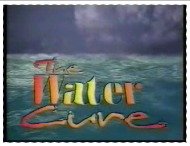
 |
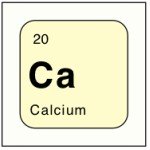 |
Warning: Research shows calcium supplements may be harmful to your health.
| Fixing Blood Disorders
Posted December 2016 |
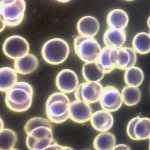 |
© 2016 Jonathan Steele
It is amazing how so many things that are new to us were common knowledge in the past. One basic practice of the Water Cures protocol is to drink at least 30-45 minutes before and 2 1/2 hours after a meal. This is not a new thought however. Notice what a magazine from 1925 had to say...
"Drink plenty of water two hours after each meal; drink none just before eating; and a small quantity if any at meal time. Do not take a bath until two hours after eating a meal, nor closer than one hour before eating. Drink a full glass of water both before and after the bath." (Golden Age, Sept. 9, 1925, pp. 784-785)
 |
New in 2016
Cancer 1, Natural Cures 0
The War...is against...
Cancer Natural Cures
---------------------
| Hand Joint Pain: How Can I Make It Go Away? |
 |
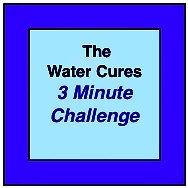 |
to try a no cost, scientifically proven way of improving your well being?
Click Here to try the 3 Minute Challenge
Find them right here!
 Shoulder Joint Pain Relief Shoulder Joint Pain Relief |
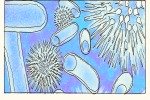 |
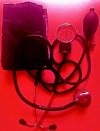 |
What Your Doctor's Not Telling You!
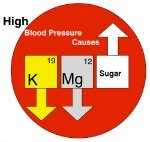 High Blood Pressure Causes High Blood Pressure Causes |
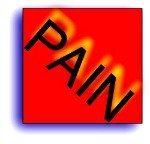 |
 |
We started expanding on the causes...
The weirdest...chimney sweep cancer. You won't believe where it strikes.
Our theory on...
Healthy Hydration for Athletics & the reason for hydration guideline failures in the past.
We speak to organizations small and large, private and corporate.
Our scientifically proven training works to improve performance and decrease lost days due to illness.
We are currently speaking to hospitals to train staff in ways to decrease the readmission rates in several disease processes that pose high risk of <30 day readmission.
We can cut the rates by up to 70%. Ask us how.
Nurse Jon for more information on hydrating to improve performance.
Here is the Science
We are not promoting increased salt intake. We are suggesting taking salt in amounts appropriate to your bodies needs, based on water needs. Our needs are not one size fits all.
Note: Do you have CHF or Kidney Disease? Then.....
THIS IS NOT FOR YOU.
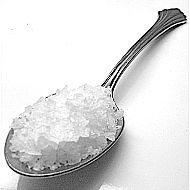 |
Read This Study
And Decide for Yourself
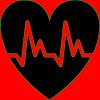 |
For Most of Us, No!
According to a JAMA study.
A Review of the above JAMA Article
Study: Salt May Not Be All Bad?
Listen to your body. Do not use this if you are under a doctors care. Do not stop taking medications without consulting your doctor. If you are on medications, consult your doctor if you start the Water Cures Protocol as it may change your needs.
 |
Click Here to Discover How
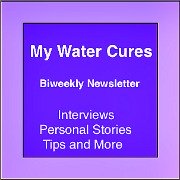 |
Click Here
Sign Up for your biweekly newsletter.
 |
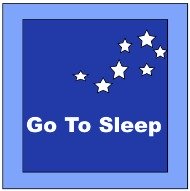 |
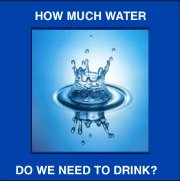 |
If you are looking for an affordable alternative natural health care for depression, consider the Water Cures protocol.
Like What You're Learning? Please share your likes on Facebook
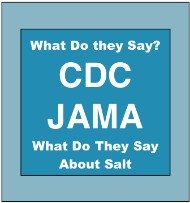 |
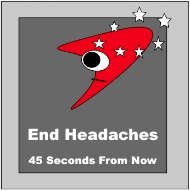 |
 |
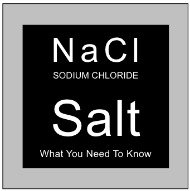 |
Hi, my name is Sharon. The webmaster of this site is my nurse, my personal water coach and my husband.
As this site was first being built, I had a headache and as usual took an Ibuprofen. Impatient for it to start working, I decided to try the Water Cures. I took a pinch of salt and a glass of water. Then I took a second pinch of salt and another glass of water. My headache was gone in less than 5 minutes.
From my personal experience, it usually takes 30 to 45 minutes for Ibuprofen to work. Some have found it takes ibuprofen 24 minutes to start working.
Yet on the Water Cures protocol, my headache was gone in 5 minutes.
Its simple: give your body what it needs and your body will give you what you need, the ability to feel great.
Water Cures was the solution for the elimination of my headache. It is what I will use from now on.
Why not give it a try yourself.

New! Comments
Have your say about what you just read! Leave me a comment in the box below.